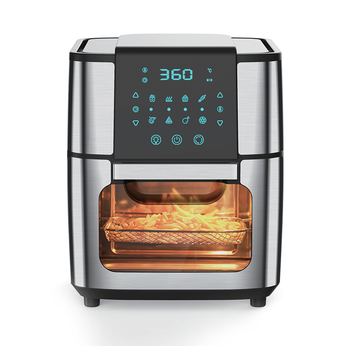Citrus juicers, especially electric models, are meticulously designed to apply an optimal amount of pressure to the fruit during the juicing process. The rotating cone or reamer makes direct contact with the fruit, pressing it to release the juice. However, the juicer is engineered to avoid excessive force, which could lead to the fruit being overworked. By maintaining a balance between pressure and rotational speed, the juicer effectively breaks down the fruit's cell walls to release juice while preventing over-extraction. This careful balance ensures that the fruit is juiced efficiently, without compromising the taste or releasing bitter oils from the peel that can affect the juice's flavor.
Higher-end citrus juicers often feature variable speed settings that provide greater flexibility in the juicing process. These settings allow the user to tailor the juicer's performance to the type of citrus fruit being used. For softer fruits like oranges, a lower speed and less pressure are applied, extracting juice gently to preserve the sweetness of the fruit. Conversely, for denser fruits such as grapefruits, the speed and pressure can be increased, ensuring that the juice is fully extracted without overworking the fruit. By adjusting the pressure and speed, users can optimize juice extraction based on fruit variety, reducing the chances of extracting excessive pulp or oils from the peel, which might otherwise result in a bitter taste.
Many modern citrus juicers are equipped with an automatic reversal feature. This mechanism causes the reamer or cone to reverse direction periodically during juicing, which helps in extracting more juice without applying additional pressure. The back-and-forth rotation allows the juicer to access all segments of the fruit and ensures that juice is extracted evenly. This feature not only maximizes juice extraction but also prevents overworking the fruit by reducing the force exerted during any single rotation. It helps extract juice from every part of the fruit, ensuring maximum yield without compromising the quality of the juice.
The design of the juicer’s cone or reamer plays a pivotal role in efficient juice extraction. A well-engineered cone typically features grooves, ridges, or textured surfaces that allow it to grip and puncture the fruit's surface evenly. The optimized shape of the cone ensures that it extracts juice from the interior of the fruit effectively, releasing juice from all segments without crushing or over-pressing the fruit. This careful design avoids applying excessive force that could lead to bitterness from the peel’s oils, ensuring that only the juice from the pulp is extracted.
Many modern citrus juicers come equipped with adjustable pulp control mechanisms, giving users the option to select the amount of pulp they wish to include in their juice. By regulating the pulp output, the juicer allows for a more refined juice that suits individual preferences. This control system works by selectively filtering out the pulp, ensuring that only the juice from the fruit is extracted. By doing so, the juicer can focus on maximizing juice yield while avoiding over-extraction of pulp or other unwanted solids. This feature ensures that the juice is both smooth and consistent, without the risk of overworking the fruit and affecting the juice's texture.
The significant feature in many citrus juicers is the self-contained extraction system, which limits the amount of force applied to the fruit during the juicing process. The fruit is placed on the cone or reamer, where the juicer applies just the right amount of pressure to extract the juice. This system prevents excessive squeezing and avoids overworking the fruit, ensuring the extraction process remains efficient while preserving the fruit’s integrity. The juicer is calibrated to use only the necessary pressure to extract juice, avoiding unnecessary force that might result in a bitter or overly fibrous juice.


 English
English 中文简体
中文简体 English
English 中文简体
中文简体












